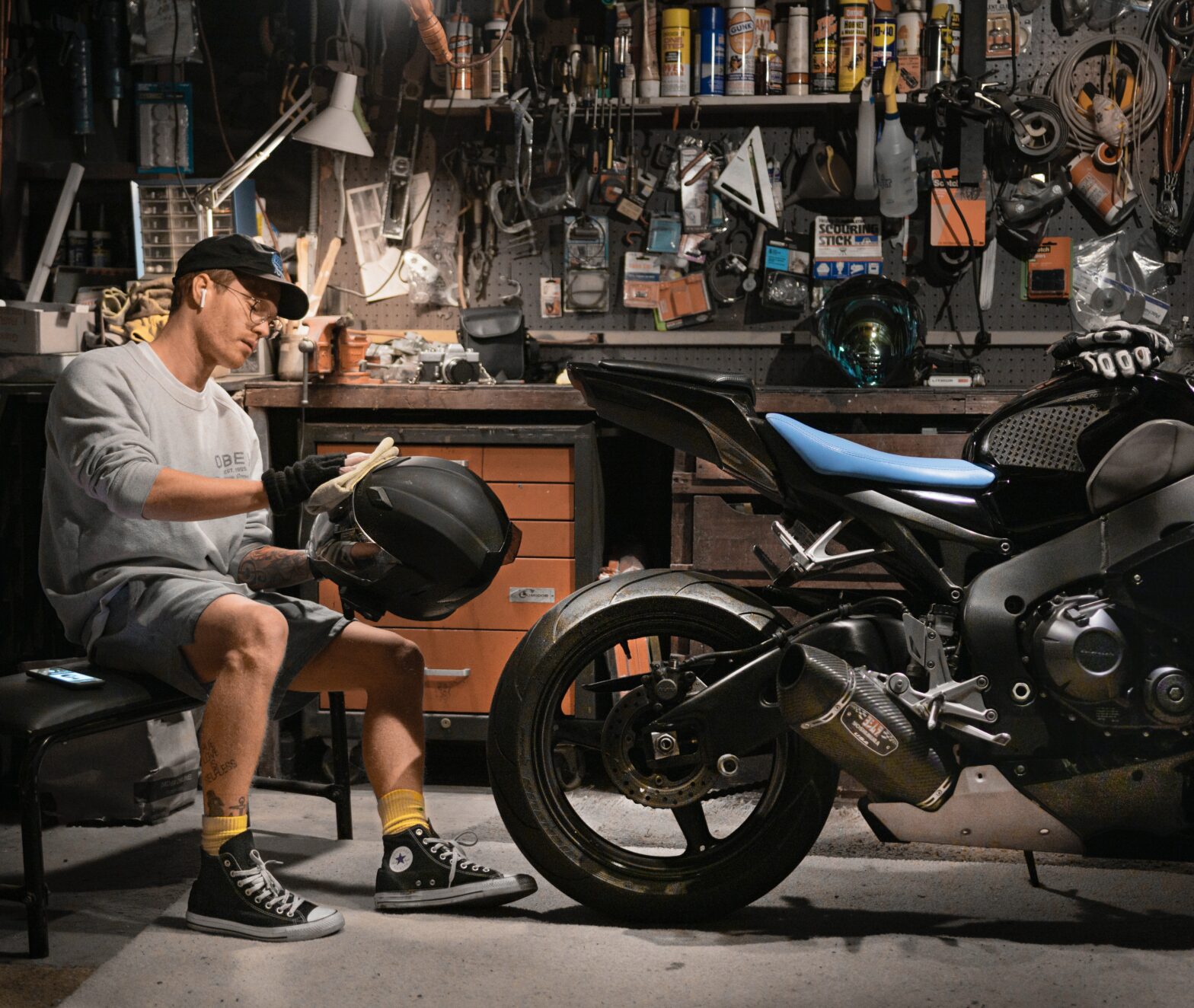Obviously, winter riding requires special gear for you and your bike to better withstand weather conditions. Besides, it’s reasonable to get the motorcycle checked by a specialist to ensure it’s ready for winter riding.
Preparing your motorcycle for snow riding
If you cannot imagine a 3-month break in riding, the good news is that you can skip that if you get your bike winter-riding-ready. Let’s see what steps you need to follow to ensure the bike’s and your safety.
Get your bike checked by a mechanic
The majority of bikes are intended for riding in warm temperatures and need certain upgrades if you decide to ride in around zero or subzero temperatures. The best way to know what you can improve is to consult a mechanic who can also help you get your bike winter-ready. For example, you can change the engine oil for a thinner one so it won’t get too viscous in the cold. Then, maybe replace a battery with one that withstands cold if you have trouble starting the engine.
Fork out for cold weather gear for yourself
It may not seem too cold when you walk outside, but believe me, you will easily freeze without appropriate gear in the winter when you start riding. Low temperatures pose the risk of hypothermia or frostbite, and the only way to prevent that is to equip yourself with insulated or heavyweight riding clothes, boots, and gloves. If you are going to ride in subzero temperatures, your best pick will be heated gear.

Another risk of cold weather is poor visibility due to fogging of the visor. For winter, it is best to opt for an anti-fog visor or visor with an electric defrost function to minimize the risk of an accident.
Tips on how to behave on the winter road
If you are determined to ride in the winter, you should keep in mind that you should be extra cautious. Naturally, winter riding is more dangerous than in dry and sunny weather. Thus, you may want to revise your regular riding style to keep it safe.
Slow down
There are probably very few bikers who don’t like to speed, but in winter, you have to keep it slow due to the lower traction of tires in cold temperatures, possible wet spots, and ice on the road. It is much better and easier to slow down than having to maneuver if the bike wouldn’t stop when you urgently need it to stop in an emergency situation.
Don’t ride when it’s snowing
Low temperatures alone significantly worsen traction, and when it snows, the situation doesn’t get any better. Besides, snow can greatly impair visibility and increase the risk of accidents. Thus, getting off the bike and waiting until the snow stops is better. You can go to the nearest cafe and drink warm tea – for such situations you should have the best application for motorcycle riders CryptoMoto installed!
Keep more distance
To minimize the risk of accidents, keep your distance from other vehicles bigger than in warmer seasons. This will give you more time to react in an unexpected situation and prevent unnecessary maneuvers and skids.
Make yourself visible
In the winter, the short daylight and poor weather conditions significantly lower visibility on the road. To be safe, it is better to make yourself as visible as possible on the road. For that, keep your lights on even during the day, and wear something bright, preferably reflective. Alternatively, you can attach reflective strips to your black gear to make it more visible.
Know your bike’s equipment
Some bikes have ABS and traction control which facilitates riding in winter. If your motorcycle has them, learn how to use the systems properly to better your safety and comfort in low temperatures.
Be careful with long stops
I have already mentioned that tire fraction is much worse in the winter than during the warm seasons. And it only worsens when your tires cool off during long stops, even at traffic lights. Thus, you should be extra careful when accelerating after a stop even if it was just for several minutes. Remember, when your tires are cold, they are much less “sticky” and don’t attach as well to the road as when they are warm.
Monitor your wellbeing
In winter riding, not only your bike but also your body needs to be closely monitored. In low temperatures, you can easily get hypothermia and, as a result, become dizzy and unfocused.

Thus, if you feel unwell, make sure to take some rest and get back in the saddle only once you feel better. If you don’t feel well before the ride, even if you were planning on a joint ride, it is better to refrain from it as you will endanger not only yourself but also your pals.











